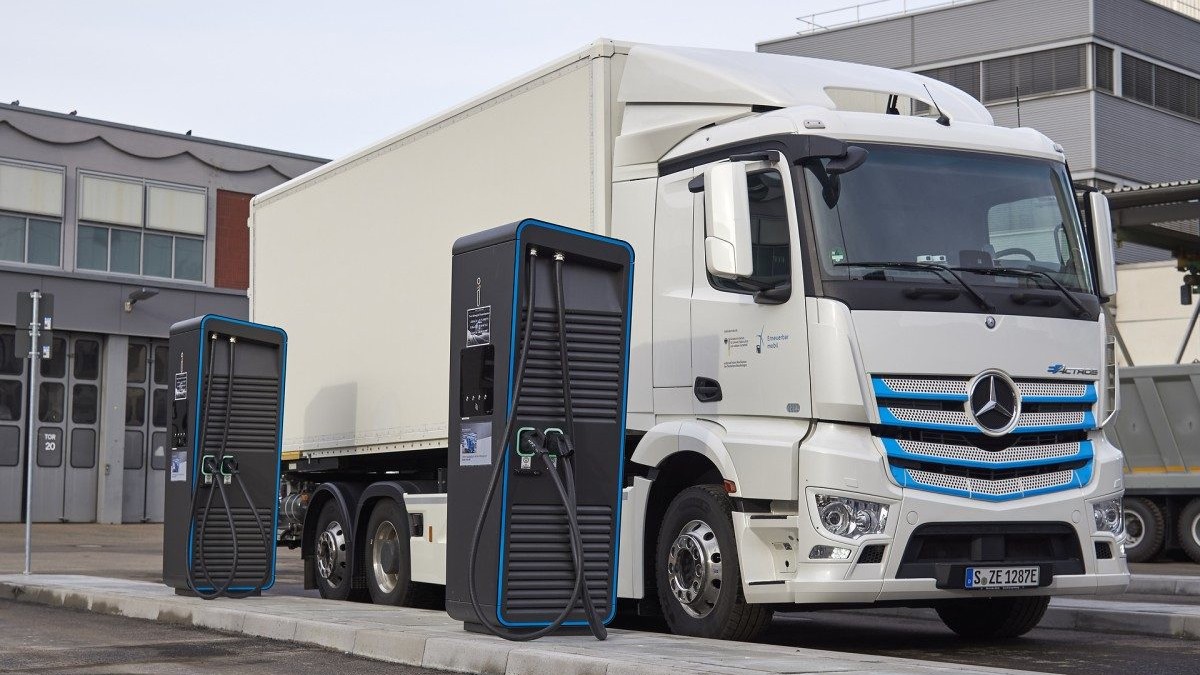
Global efforts to decarbonise medium- and heavy-duty freight vehicles are crucial for reducing transportation-related greenhouse gas (GHG) emissions, with the medium- to heavy-duty electric truck market forecast to reach NZ$335 billion (US$207b) by 2044, according to a new report.
These vehicles emit significant GHGs and criteria pollutants, often impacting vulnerable communities. Fortunately, a growing array of technologies can eliminate tailpipe emissions and reduce the overall carbon footprint of MHD vehicles.
According to IDTechEx’s latest report, Electric and Fuel Cell Trucks 2024-2044: Markets, Technologies, and Forecasts, there are over 160 models of zero-emission trucks available from more than 40 original equipment manufacturers.
MCS is the peak of cable-based conductive charging for trucks
Most commercial vehicle charging today is limited to between 150 and 350kW. While charging at this level meets the needs of many fleets, as the use of commercial battery electric vehicles expands, there will be use cases that will benefit from higher-powered charging, adding hundreds of kilometres of range to a heavy-duty truck during a rest break.
The research found that the megawatt charging system (MCS) presents opportunities and challenges of moving to much faster charging speeds, but predicts that it will become the exclusive commercial vehicle charging standard.
The MCS associated voltage cap is 1250V, so it is evident that higher charging powers are achieved by higher current and not voltage for commercial vehicles. MCS increases current by 600% and voltage by 20%, and this brings about new thermal management challenges. Active cooling of the cable and connector is required, and at power levels over 3MW, the vehicle inlet will also require cooling.
Additional challenges also exist, according to the report. Truck OEMs buying battery packs from third-party suppliers need to make sure voltage requirements meet the specs of MCS. Furthermore, supplying power to the site of groups of these chargers can be challenging, specifically with long lead times on interconnection agreements, transformers, and permits, as well as demand fees.
While MCS will become the standard in Europe and the US, In China, co-developers China Electricity Council, and CHAdeMO’s “ultra ChaoJi” are developing a charging standard for heavy-duty electric vehicles for up to 1.8 MW.
The rise of battery swapping in the Chinese truck market
Battery swapping in China is a product of increased policies – targets laid out by the central government and subsidies provided for swap station construction (up to 15%) by the local government help alleviate the issues around high capital costs associated with large swapping stations. The research found that battery-swapping trucks are now taking up roughly 50% of the electric truck market in China.
According to the report, taking into account depreciation, impairment, site rent, kilowatt-hour electricity costs, and labour costs, the investment payback period for a heavy-duty truck battery swapping station is as long as six years. Given the high initial upfront capital cost, unless there is significant government support and OEM interest in the swapping charging strategy for trucks in the Western world, this technology will remain dominant in China.





